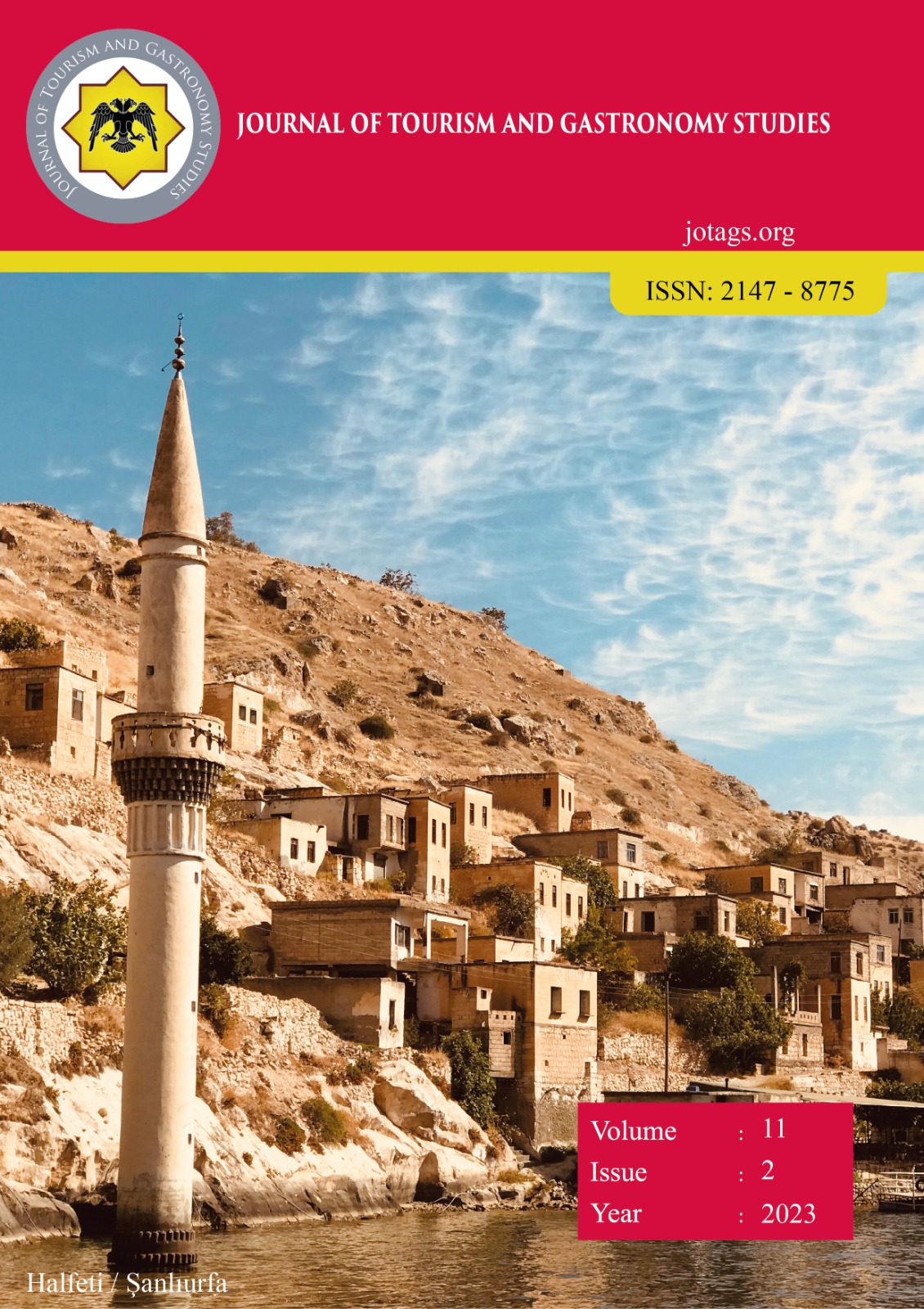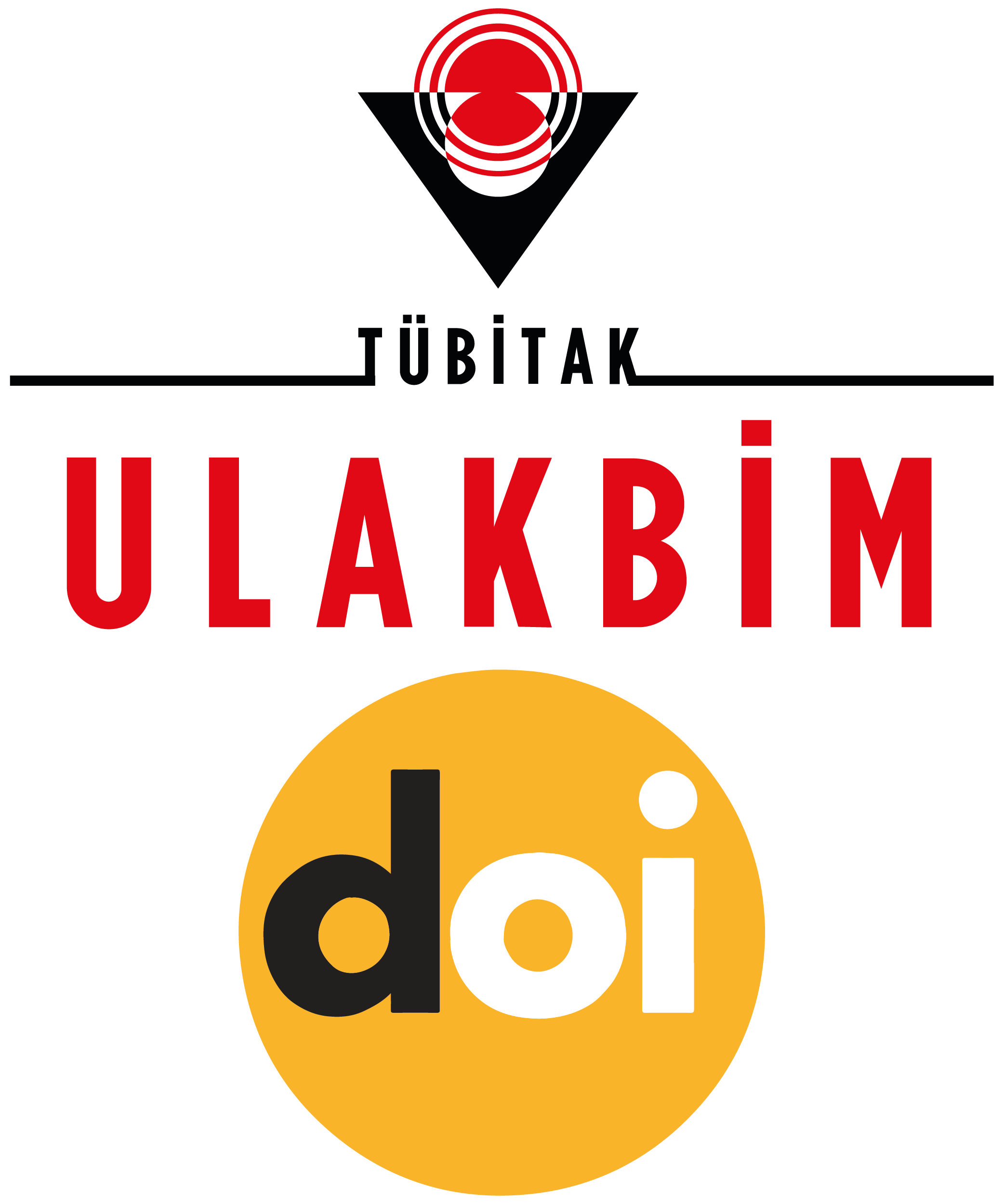Soğuk Çay ve Limonata Formülasyonlarında Sakkaroz (Sofra Şekeri) ve Stevya Kullanımının Ürün Tercihi Üzerine Etkisi (The Effect of Sucrose (Table Sugar) and Stevia Use in Ice Tea and Lemonade Formulations on Product Preference)
DOI:
https://doi.org/10.21325/jotags.2023.1227Keywords:
Dietetic product, Sensory evaluation, Cold beverage, SweetnessAbstract
In this study, the effect of preparing ice tea and lemonade with sucrose or stevia as sweetener on product preference was investigated in a pilot scale. In order to determine the most preferred sucrose and stevia concentrations for ice tea and lemonade, ice tea containing 2.5-12.5% sucrose and 0.5-0.75% stevia, and lemonade containing 10-17.5% sucrose and 0.25-1.25% stevia were prepared separately and subjected to sensory evaluation. As a result of the sensory evaluation using the ranking test with the participation of 15 panelists, the most preferred concentrations were determined as 10% sucrose, 0.55% stevia for ice tea and 15% sucrose, 0.75% stevia for lemonade, respectively. Paired comparison test was used in the sensory evaluation panel by attendance of 20 panelists applied to determine the effect of sucrose and stevia as sweeteners on product preference in ice tea and lemonade samples. As a result of the evaluation of ice tea and lemonade samples with the most preferred sucrose and stevia concentrations, it was determined that the use of sucrose and stevia created a difference in the sensory perceptions and sucrose was preferred for both beverages (p< 0.001).
References
Ahmad, J., Khan, I., Blundell, R., Azzopardi, J. & Mahomoodallyc, M. F. (2020). Stevia rebaudiana Bertoni.: an updated review of its health benefits, industrial applications and safety, Trends in Food Science & Technology, 100, 177–189; https://doi.org/10.1016/j.tifs.2020.04.030
Altuğ, T. & Elmacı, Y. (2009). “Tatlandırıcılar”. Gıda Katkı Maddeleri. Editör Altuğ, T., 3. Baskı, Sidas Medya, İzmir, 201-223, ISBN: 978-975-97408-0-1.
Altuğ-Onoğur, T. & Elmacı, Y. (2011). Gıdalarda Duyusal Değerlendirme, Sidas Medya, İzmir, 134s. ISBN: 978- 9944-5660-8-7.
Aydın, Ö., Öney, B. & Koçak, B. (2022). Doğal ve yapay tatlandırıcıların sağlık üzerine etkileri. Atlas Üniversitesi Tıp ve Sağlık Bilimleri Dergisi, 1(3); 10.54270/atljm.2022.14
Balkır, P. (2016). Stevia; Fonksiyonel özellikleri ve gıdalarda kullanım olanakları. Gıda, 41(6), 435-442; https://dergipark.org.tr/tr/pub/gida/issue/43781/537575
Bhutia, P.H. & Sharangi, A.B. (2016). Stevia: Medicinal Miracles and Therapeutic Magic. International Journal of Crop Science and Technology, 2(2),45-59; https://dergipark.org.tr/en/pub/ijcst/issue/29923/322310
Budak, G. & Tezcan, E. (2019). Gıdalarda Sıklıkla Kullanılan Doğal ve Yapay Tatlandırıcıların Sağlık Üzerine Etkileri. Journal of Health and Sport Sciences, 2(3), 74-78; https://dergipark.org.tr/tr/pub/jhss/issue/57624/818538
FDA (2018). Food and Drug Administration GRAS Notice No.768; https://www.fda.gov/media/119340/download.
Goyal, S.K, Samsher & Goyal, R.K. (2010) Stevia (Stevia rebaudiana) a Bio-Sweetener: A Review. International Journal of Food Sciences and Nutrition, 61(1), 1-10; https://doi.org/10.3109/09637480903193049
ISO 5495 (2005). Sensory analysis — Methodology — Paired comparison test. International Organization for Standardization, Geneva.
ISO 8587 (2006). Sensory analysis – Methodology – Ranking. International Organization for Standardization, Geneva.
Kola, O., Gevrek, Z., Parıldı, E. & Akkaya, M. R. (2022). Stevia: Şekere Alternatif Doğal ve Sıfır Kalorili Tatlandırıcı. Türk Doğa Bilimleri Dergisi, 1(1), 21-32.
Mutlu, E., Yalınkılıç, B. & Mutlu H. (2021). Diyabetik çilek reçeli üretiminde keçiboynuzu unu, stevya ve tarçın kullanımının ürünün duyusal özellikleri üzerine etkisi. 1. Ulusal Gastronomi Çalışmaları Sempozyumu “Akdeniz Gastronomi Kültürü”, 18-19 Şubat 2021, İstanbul, Bildiri Kitabı, s.7
Ozdemir, C., Arslaner, A., Ozdemir, S. & Allahyari M. (2015). The production of ice cream using stevia as a sweetener. Journal of Food Science and Technology, 52(11), 7545–7548; https://doi.org/10.1007/s13197-015- 1784-5
Palamutoğlu, R., Kasnak, C. & Moral, B. (2018). Şeker ikamesi olarak stevya estraktı kullanımının keklerin bazı fiziksel ve duyusal özellikleri üzerine etkisi. Karadeniz Fen Bilimleri Dergisi, 8(1), 98-108; doi: 10.31466/kfbd.392106
Pielak, M., Czarniecka‐Skubina, E. & Głuchowski, A. (2020). Effect of sugar substitution with steviol glycosides on sensory quality and physicochemical composition of low‐sugar apple preserves. Foods 9(3), 293; https://doi.org/10.3390/foods9030293
Rank, A. & Midmore, D. (2006). Stevia - an intense sweetener : laying the ground work for a new industry. A report fort he Rural Industries Research and Development Corporation, Australian Goverment, RIRDC Publication No 06/020, RIRDC Project No UCQ-17A; https://hdl.handle.net/10018/7161
Schiatti-Siso, I.P., Quintana, S.E. & García-Zapateiro, L.A. (2022). Stevia (Stevia rebaudiana) as a common sugar substitute and its application in food matrices: an updated review. Journal of Food Science and Technology, https://doi.org/10.1007/s13197-022-05396-2
Singh, S.D. & Rao, G.P. (2005). Stevia: The herbal sugar of 21st century. Sugar Tech. 7(1), 17-24; https://doi.org/10.1007/BF02942413
Şengül, M. & Ünver, H. (2022). Farklı tatlandırıcılar ile üretilen kızılcık pestillerinin bazı fizikokimyasal özellikleri, ATA-Gıda Dergisi, 1(1), 0001.
TGK (2013). Türk Gıda Kodeksi Gıda Katkı Maddeleri Yönetmeliği. Resmi Gazete: 30.06.2013 – 28693.
Tijhuis, M.J., Wapperom, D., Wolterink, G., van Oosterhout, C.H.M., Temme, E.H.M., Van Klaveren, J.D., Verhagen, H. & Fransen, H.P. (2011). Steviol glycosides in food: Exposure scenarios and health effect assessment. National Institute for Public Health and Environment, Ministry of Health, Welfare and Sport. RIVM Letter report 350121001/2011.
Vasconcelos, M.A., Orsolin, P.C., Silva-Oliveira, R.G., Nepomuceno, J.C. & Spano, M.A. (2017). Assesment of the carcinogenic potential of high intense-sweeteners through the test for detection of epithelial tumor clones (warts) in Drosphila melanogaster. Food and Chemical Toxicology, 101, 1-7; https://doi.org/10.1016/j.fct.2016.12.028
Ye J.H., Ye, Y., Yin, J.F., Jin, J., Liang, Y.R., Liu, R.Y., Tang, P. & Xu, Y.Q. (2022). Bitterness and astringency of tea leaves and products: Formation mechanism and reducing strategies. Trends in Food Science & Technology, 123, 130-143; https://doi.org/10.1016/j.tifs.2022.02.031
Yıldız, E. (2019). Glutensiz bisküvi üretiminde badem unu ve stevya kullanımı (Doktora tezi). Bursa Uludağ Üniversitesi Fen Bilimleri Enstitüsü, Bursa
Yıldız, M. & Karhan, M. (2021). Characteristics of some beverages adjusted with stevia extract, and persistence of steviol glycosides in the mouth after consumption. International Journal of Gastronomy and Food Science, 24, 100326; https://doi.org/10.1016/j.ijgfs.2021.100326
Downloads
Published
How to Cite
Issue
Section
License
Copyright (c) 2023 Journal of Tourism & Gastronomy Studies

This work is licensed under a Creative Commons Attribution-NonCommercial 4.0 International License.








